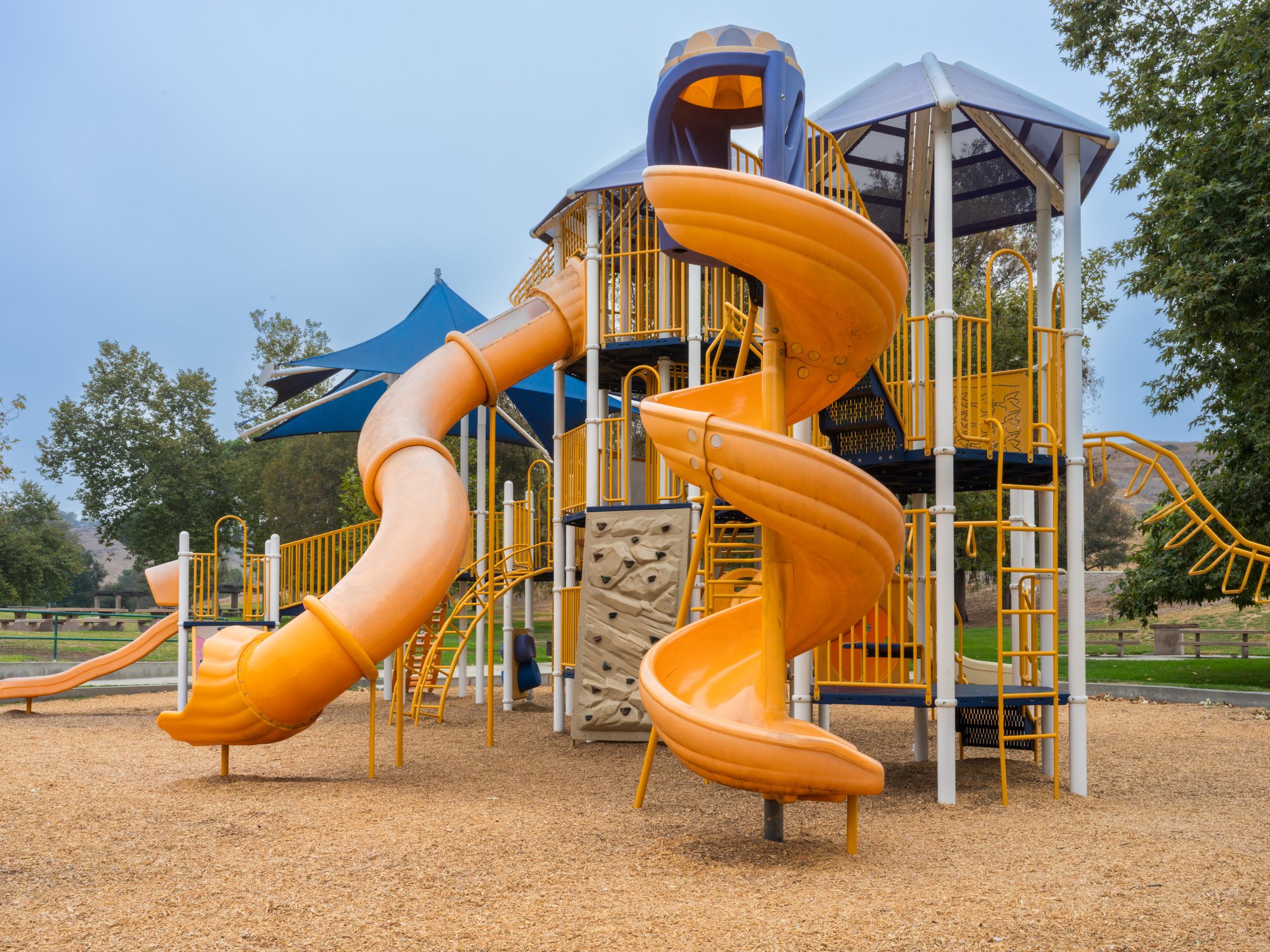How to Start Planning for a Playground
Posted by May Recreation Content Team on

Designing and building a playground is an exciting opportunity to create a space where children, families, and communities can connect, play, and grow. But with so many choices — from equipment styles to surfacing materials — it’s easy to feel overwhelmed at the start.
“Designing a playground structure can be overwhelming,” says May Recreation owner Randy May. “There are so many types of equipment out there, that you may find yourself wondering what you need on your playground and why.”
Whether you’re part of a school, neighborhood association, church, or municipality, the right planning process will ensure your project comes together on time, on budget, and with lasting value.
Here’s a step-by-step guide, adapted from May Recreation’s Playground Planning Guide, to help you move from idea to installation with confidence.
Begin by Gathering Information
Before you start choosing equipment, colors, or themes, it’s important to explore the possibilities and see what’s out there. The research stage helps you develop a clear vision for your playground’s look, feel, and function.
Ways to gather inspiration:
- Search online: Browse images, videos, and case studies to discover what you like (and what you don’t).
- Visit playgrounds in person: Get a feel for materials, layouts, and color schemes. Take photos and note features that attract kids’ attention.
- Talk to others who have built playgrounds: Ask about their experiences, what worked well, and what they would change.
- Collect feedback from the community: Parents, teachers, and children can provide valuable insight into what features matter most.
- Review vendor catalogs: Many playground equipment providers, including May Recreation, offer free catalogs to help you compare options.
Pro Tip: Bring a notebook or create a shared digital folder so your team can store photos, notes, and wish lists in one place.
Choose Trusted Vendors and Partners
Not all playground equipment is created equal. Working with reputable vendors ensures access to quality equipment, safe installations, and long-term product support.
May Recreation partners with industry-leading brands such as:
- Miracle: Play equipment, shade structures, and site furnishings.
- First Team: Sports goals for all ages.
- No Fault: Durable pour-in-place rubber surfacing.
- Fibar: Engineered wood fiber surfacing.
- Synlawn: Synthetic turf with minimal maintenance needs.
- Stern-Williams: Drinking fountains.
- Rubberecycle: Rubber mulch made from recycled materials.
- UPC Parks: Concrete play structures.
- USA Shade: Shade and fabric structure solutions.
- Wabash Valley: Commercial grade outdoor furniture.
- Classic Recreation Systems: Shade structure designs.
- Percussion Play: Outdoor musical instruments
Pro Tip: Ask your vendor for case studies or references so you can see how their products perform over time in real-world conditions.
Establish a Realistic Budget
Budget planning is about more than just the cost of play structures. It should include:
- Surfacing materials.
- Installation costs.
- Shade structures.
- Benches and picnic tables.
- Drinking fountains.
- Fitness or sports equipment.
- Pet play areas.
- Trash and recycling receptacles.
- Surfacing containment (like border timbers).
Many communities also budget for landscaping, lighting, or signage to enhance the space.
Pro Tip: Build in a small contingency fund (5–10 percent of your budget) for unexpected needs that arise during construction.
Define Your Playground Objectives
Every successful playground begins with a clear set of goals. Ask yourself:
- Who will use this playground? (Community members, students, church members?)
- What age groups should it serve?
- Are there accessibility needs or special circumstances to consider?
- Should the space encourage physical activity, creative play, community gatherings — or all of the above?
Example: A school may focus on age-appropriate climbing and sliding equipment for grades K–5, while a community park might prioritize multi-generational spaces that include benches, walking paths, and fitness stations.
Partner with a Playground Design Expert
A playground project has many moving parts — and an experienced design partner can help you navigate them all.
Look for a company with:
- Years of experience.
- Strong relationships with reputable vendors.
- A portfolio of completed projects.
- Testimonials or case studies.
- Knowledge of safety standards and ADA requirements.
A design expert can also help you create 3D renderings, adjust layouts for better traffic flow, and ensure your playground is both visually appealing and compliant with regulations.
Select the Right Surfacing
Playground surfacing isn’t just about looks — it’s a key factor in safety, accessibility, and maintenance.
Loose fill options:
- Engineered Wood Fiber (EWF): Affordable, natural-looking, and ASTM-certified for safety.
- Rubberized Loose Fill: Long-lasting, low-maintenance, and available in multiple colors.
Unitary options:
- Pour-in-Place Rubber: Durable, accessible, and customizable in design and color.
- Synthetic Turf: Offers the look of grass without the upkeep.
Don’t forget surfacing containment like border timbers to keep materials in place and maintain a neat appearance.
Pro Tip: If your playground will be heavily used year-round, unitary surfacing like pour-in-place may be more cost-effective in the long run due to reduced maintenance.
Ensure ADA Compliance
The Americans with Disabilities Act Accessibility Guidelines (ADAAG) require public playgrounds to provide barrier-free access and meet impact protection standards.
Compliance may include:
- Plastic ramps or transfer systems
- Accessible ground-level play activities
- Surfaces tested for wheelchair accessibility
Designing for inclusivity means children of all abilities can enjoy the playground together, promoting social interaction and equal access.
Choose the Best Site Location
Where you place your playground affects its safety, usability, and lifespan. Key considerations include:
- Drainage: Prevent water pooling and erosion.
- Vegetation: Avoid roots or plants that could damage equipment.
- Shade: Provide comfort and sun protection.
- Noise: Be mindful of nearby homes or busy streets.
- Security: Ensure visibility and safe access.
- Accessibility: Consider proximity to parking or walkways.
Pro Tip: Visit the site at different times of day to observe sun exposure, traffic patterns, and potential safety concerns.
Plan for Professional Installation
Even the best playground equipment won’t deliver long-term value if it’s poorly installed.
Professional installers ensure:
- Compliance with manufacturer specifications.
- Proper anchoring and safety measures.
- Minimal disruption to surrounding areas.
This step is where careful planning pays off — mistakes made during installation can be costly to fix later.
Establish a Maintenance Schedule
A playground is an investment — and like any investment, it requires upkeep.
Maintenance may include:
- Inspecting surfacing depth and condition.
- Checking hardware and connections.
- Cleaning and sanitizing equipment.
- Replacing worn or damaged parts.
Pro Tip: Schedule inspections seasonally and after extreme weather to catch small issues before they become costly repairs.
Partner with May Recreation for a Seamless Playground Planning Experience
With over 30 years of experience serving schools, municipalities, churches, and communities across Texas, May Recreation is your trusted partner for playground design, equipment, and installation.
From the first conversation to the final inspection, our team helps you navigate every step of the process, ensuring your playground is safe, beautiful, and built to last.
Contact May Recreation today to request your free Playground Planning Guide and start bringing your vision to life.
